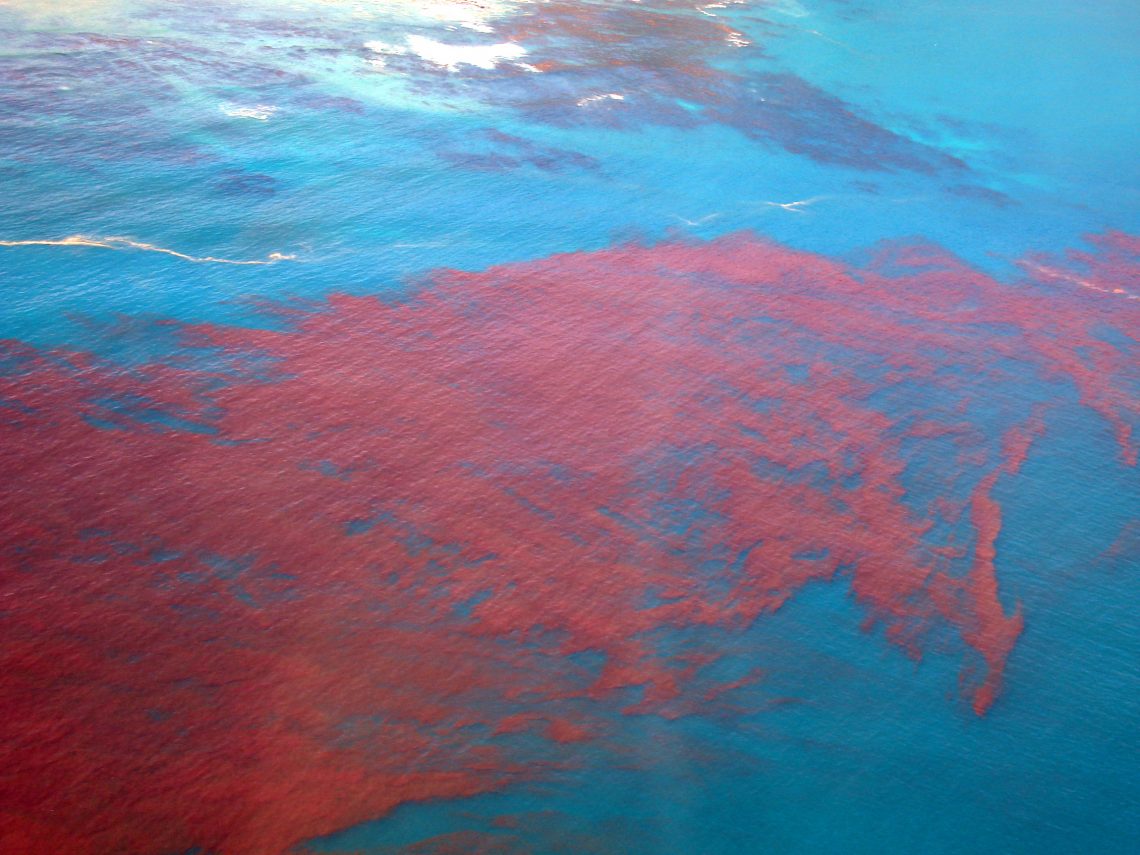
Why the Ocean Keeps Bleeding
By Bre Jarvis (Editor-in-Chief)
During the summer of 2018, red waters crept up the beaches of Florida’s Gulf Coast. As dead sea life washed ashore and a pungent smell ran through the sea breeze, it almost seemed as if the ocean were bleeding. Indeed, Heather Barron, head veterinarian at Florida’s Clinic for the Rehabilitation of Wildlife, said of the frightening conditions last August: “Anything that can leave has, and anything that couldn’t leave has died” (National Geographic).
But why was the ocean bleeding? Perhaps you’ve heard of the culprit: red tide.
Red tide is a natural phenomenon that involves the growth of microbial algae in ocean environments. Its name comes from the rusty color that some of these algae produce. One such species, Karenia brevis, grows in large numbers off the coast of Florida. The powerful effects of K. brevis are by no means new (red tide has been recorded as early as the 1500s), but the intensity of Florida’s red tide last summer is unlike anything the state has ever seen.
So, what’s the big deal? Besides discoloring Florida’s normally crystal blue waters, red tide can have a lethal impact on the environment—so much so that scientists have labelled K. brevis a harmful algal bloom (HAB). Red tide is responsible for the production of brevetoxin, a neurotoxin which can result in sickness and even paralysis when consumed by sea life.
“Lots and lots of species—fish, mammals, reptiles—all get affected by [red tide] because those toxins end up going up the food chain,” explains Ms. Fagan, who teaches Marine Science at Nease. Due to bioaccumulation (the accumulation of harmful chemicals in an organism’s tissues as it consumes other organisms infected with chemicals), predators such as mammals, birds, and turtles often suffer the most severe effects of brevetoxin. In fact, a recent outbreak of red tide contributed to the death of 149 manatees in a single year (Smithsonian).
Humans are also affected by brevetoxins and can suffer from serious illness (including respiratory, digestive, or heart issues) and even death after inhaling the toxin or consuming seafood infected with it. Red tide’s damaging effects extend to the economy as well: according to the Oceanic and Atmospheric Association, HABs cost the U.S. about $82 million each year due to their harmful impact on the fishing and tourism industries.
But what exactly is responsible for the increasing growth of red tide in recent years? The answer may or may not surprise you: humans.
According to the Environmental Protection Agency (EPA), red tide is a form of nutrient pollution. Nutrient pollution occurs when runoff from agriculture, storm water, wastewater, fossil fuels, and certain household products pollute water sources (like the ocean) with excessive amounts of nitrogen and phosphorus. Because nitrogen and phosphorus are essential to all forms of life, large amounts of these nutrients can lead to uncontrollable growth of microbial colonies.
So, while HABs do occur naturally to some extent, human activities can dramatically augment the size and intensity of algal blooms such as red tide.
What can students do to shift the tide? Ms. Fagan states that students can play a role in mitigating red tide on a personal level—for example by cleaning up pet waste and being mindful of the chemicals used in spraying their yard. “Other than that, it really just becomes political,” she says. Ms. Fagan suggests reaching out to your representatives in Congress “about making laws restricting what big companies can do.”
Findings indicate that the 2018 bloom is finally declining, but that doesn’t mean Florida’s environment is safe from red tide. As long as runoff from human activities continues to pollute waterways, red tide will infect Florida’s oceans each year. And if our unhealthy habits worsen at their current rate, algal growth—and its harmful effects—will inevitably escalate. In short, if we don’t do something to mitigate red tide, the ocean will “bleed” more heavily each passing year.
Cover Photo Credit: Surfline

